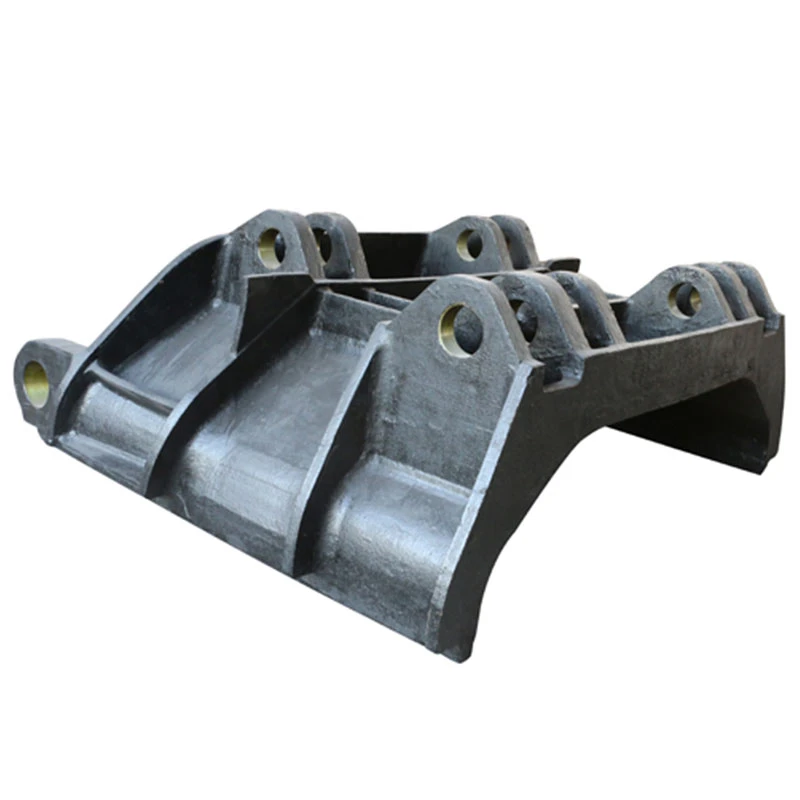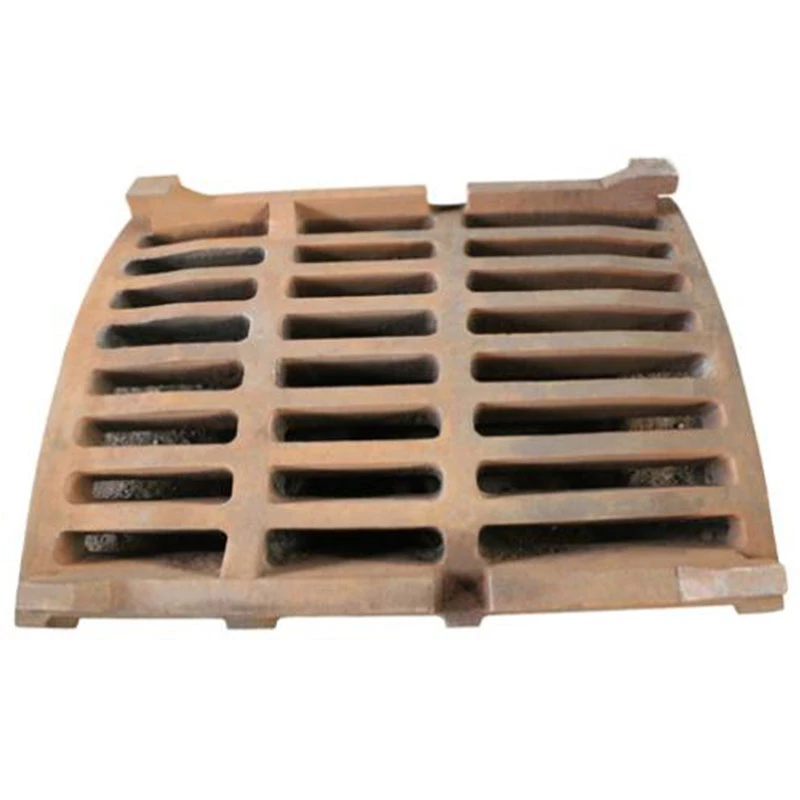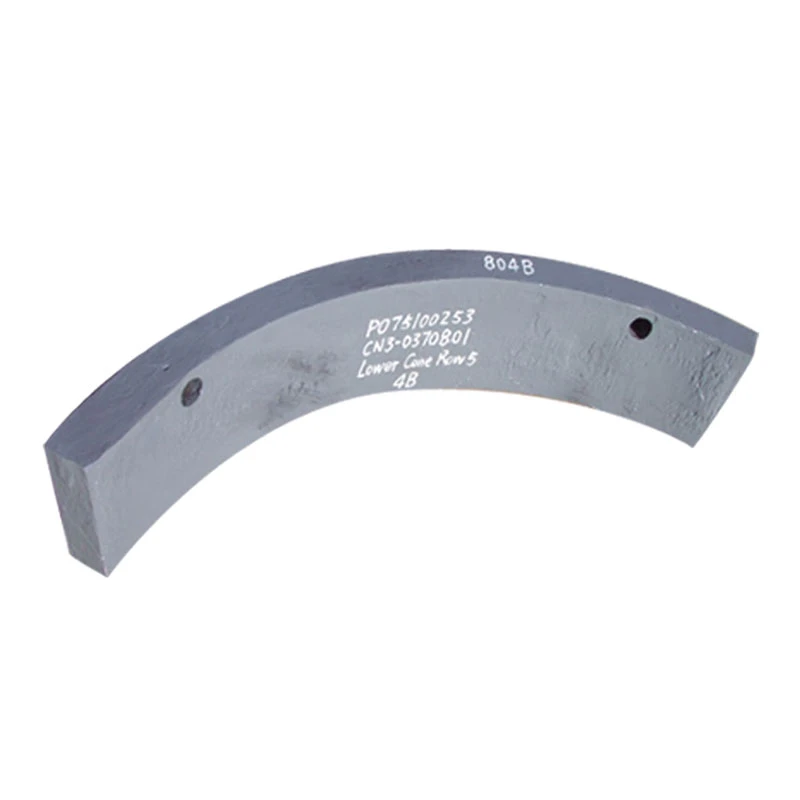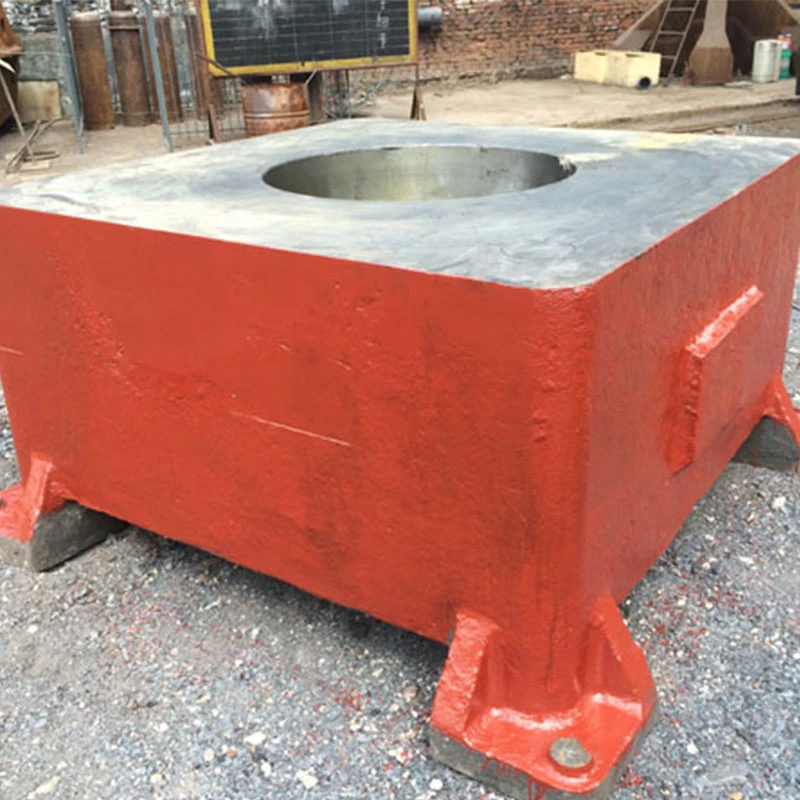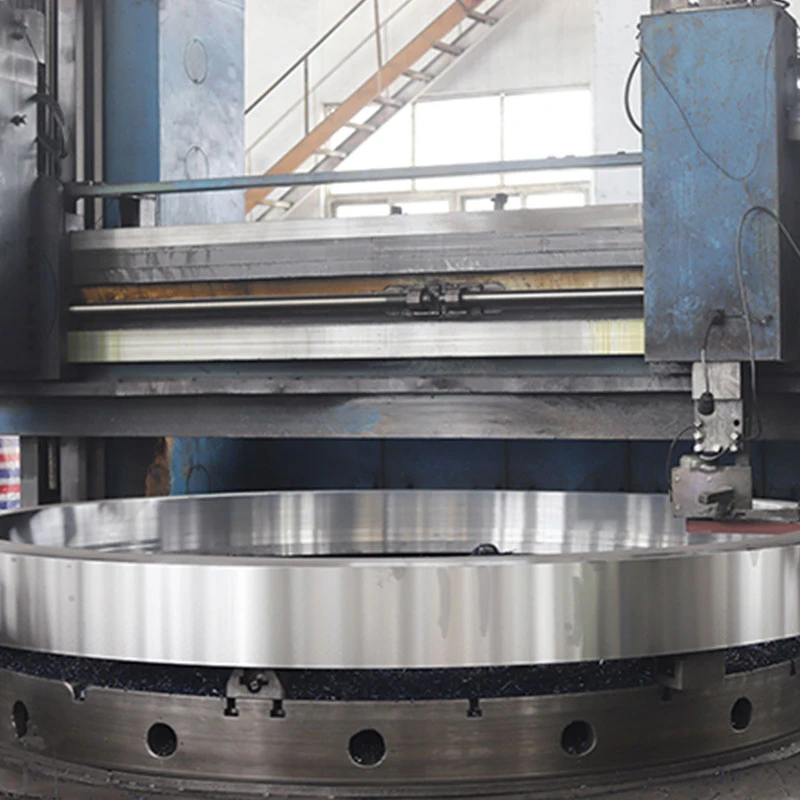- Afrikaans
- Albanian
- Amharic
- Arabic
- Armenian
- Azerbaijani
- Basque
- Bengali
- China
- China (Taiwan)
- Czech
- Danish
- Dutch
- English
- French
- German
- Greek
- Gujarati
- Haitian Creole
- hausa
- Miao
- Hungarian
- igbo
- Indonesian
- Italian
- Japanese
- Javanese
- Rwandese
- Korean
- Kyrgyz
- Lao
- Lithuanian
- Luxembourgish
- Macedonian
- Malgashi
- Malay
- Mongolian
- Myanmar
- Nepali
- Norwegian
- Persian
- Polish
- Portuguese
- Punjabi
- Russian
- Spanish
- Swahili
- Swedish
- Telugu
- Vietnamese
Aug . 07, 2025 05:20 Back to list
Efficient Hole Opener Drill Bits for Large Diameter Drilling
Introduction to Hole Opener Drill Bits
In the demanding realms of mining, construction, and oil & gas exploration, the ability to create precise, large-diameter boreholes efficiently is paramount. This is where Hole Opener Drill Bits emerge as indispensable tools. Unlike conventional drill bits designed for initial penetration, hole openers are specialized reaming tools used to enlarge a pre-drilled pilot hole to a larger, desired diameter. This two-stage drilling approach significantly enhances stability, accuracy, and overall drilling efficiency, especially in challenging geological formations.
Our comprehensive guide delves into the intricate world of Hole Opener Drill Bits, covering everything from their fundamental design and manufacturing processes to their diverse applications and the advanced technologies driving their performance. Whether you are an industry veteran or new to drilling operations, this resource aims to provide profound insights into selecting, utilizing, and optimizing these critical components for maximum productivity and cost-effectiveness.
Industry Trends and Market Dynamics for Hole Opener Drill Bits
The market for Hole Opener Drill Bits is directly influenced by global infrastructure development, energy demand, and mining activities. According to recent market analysis reports, the global drilling tools market, inclusive of hole openers, is projected to grow at a Compound Annual Growth Rate (CAGR) of approximately 5.5% from 2023 to 2028, reaching an estimated value of over $15 billion. This growth is primarily driven by:
- Increased Horizontal Directional Drilling (HDD): The expanding use of HDD for pipeline installation (oil & gas, water, sewage), telecommunications conduits, and utility lines necessitates larger diameter reamed holes, driving demand for specialized Hole Opener Drill Bits.
- Resurgence in Mining Activities: As mineral and metal demands surge, more extensive and deeper mining operations require robust and efficient large-diameter drilling for ventilation shafts, raise bores, and access tunnels.
- Technological Advancements: Continuous innovation in materials science (e.g., enhanced tungsten carbide inserts, PDC cutters), cutting structures, and bearing technologies is leading to more durable, faster-drilling, and longer-lasting Hole Opener Drill Bits, reducing operational costs and increasing efficiency.
- Focus on Efficiency and Cost Reduction: Operators are increasingly seeking tools that offer superior rate of penetration (ROP) and extended tool life to minimize downtime and lower overall drilling costs. This demand pushes manufacturers to innovate in design and material science.
The trend is towards more specialized, application-specific Hole Opener Drill Bits that can withstand extreme conditions, including abrasive formations, high temperatures, and corrosive environments, while maintaining optimal performance. This necessitates a deep understanding of geological challenges and engineering solutions.
Technical Parameters and Specifications of Hole Opener Drill Bits
Hole Opener Drill Bits are complex engineering marvels, designed with precision to achieve specific drilling objectives. Their performance is dictated by a range of technical parameters, each critical for optimal operation in varying geological conditions.
| Parameter | Description | Typical Range/Values | Impact on Performance |
|---|---|---|---|
| Reaming Diameter | The final diameter of the enlarged hole. | 10 inches (254mm) to 120 inches (3048mm) or more. Custom sizes available. | Determines the size of the enlarged borehole; critical for matching project requirements. |
| Pilot Bit Size | The diameter of the initial borehole that the hole opener follows. | 6 inches (152mm) to 26 inches (660mm), dependent on hole opener size. | Ensures concentricity and guides the hole opener, providing stability. |
| Connection Type | The API (American Petroleum Institute) thread standard used to connect the hole opener to the drill string. | API Reg (Regular), API FH (Full Hole), API IF (Internal Flush) – various sizes (e.g., 6 5/8" Reg, 7 5/8" Reg). | Ensures compatibility with drilling rig and drill string components; critical for safety and operational integrity. |
| Number of Cutters/Cones | Refers to the number of reaming cones mounted on the body. | 3 to 6 cones are common; custom designs for specific needs. | More cones generally distribute load better, potentially increasing tool life and stability, especially for larger diameters. |
| Cutting Structure | The type of inserts or teeth on the cones, designed for specific rock types. | TCI (Tungsten Carbide Inserts): Durable, for medium-hard to very hard abrasive formations. Milled Tooth (Steel Tooth): Aggressive, for soft to medium formations. PDC (Polycrystalline Diamond Compact): Extremely hard, for non-abrasive, softer to medium formations, high ROP. |
Crucial for optimizing Rate of Penetration (ROP) and wear resistance in different geological conditions. Selecting the correct structure is paramount. |
| Bearing Type | The design of the bearings that allow the cones to rotate. | Sealed journal bearings (most common for demanding applications), Roller bearings (for less severe applications or smaller sizes). | Impacts lifespan and heat management; sealed bearings offer superior durability in high-load, high-temperature environments. |
| Circulation Ports | Channels designed for drilling fluid (mud) flow. | Optimized for specific flow rates and pressure. | Ensures efficient cuttings removal and bit cooling, preventing bit balling and improving ROP. |
| Gauge Protection | Hardfacing or additional inserts on the outer diameter to prevent wear and maintain hole size. | Often TCI inserts or hardfacing material on the gauge pads. | Maintains desired hole diameter, prevents premature wear of the bit body, and improves wellbore quality. |
| Body Material | High-strength alloy steel, typically heat-treated for maximum durability. | API standard steel grades (e.g., AISI 4140, 4340). | Ensures structural integrity and resistance to torque, vibration, and impact loads. |
Understanding these parameters is vital for selecting the appropriate Hole Opener Drill Bits for any given project. For instance, an operator working in very hard, abrasive granite would require TCI cutters with robust sealed journal bearings and excellent gauge protection, whereas drilling through soft clay might benefit from a milled tooth design for faster penetration.
Application Scenarios of Hole Opener Drill Bits
Hole Opener Drill Bits are incredibly versatile, finding critical applications across a spectrum of heavy industries due to their ability to efficiently create large-diameter boreholes. Their dual-stage drilling approach (pilot hole first, then reaming) offers significant advantages in terms of stability and control.
- Oil & Gas Exploration and Production:
- Wellbore Enlargement: Used to enlarge pilot holes for casing installation, especially in challenging formations or where larger production tubing is required.
- Horizontal Directional Drilling (HDD) for Pipelines: Essential for reaming pilot bores for oil, gas, and water pipelines under rivers, roads, and environmentally sensitive areas. They create the necessary diameter for pulling in large pipeline segments.
- Underground Storage Caverns: For salt cavern storage of natural gas or other hydrocarbons, precise large-diameter drilling is crucial.
- Mining Industry:
- Ventilation Shafts: Creating large shafts for mine ventilation systems, crucial for worker safety and air quality.
- Raise Bore Operations: Used in raise boring to create shafts from one level to another, often for ore pass, manway, or ventilation purposes. Hole Opener Drill Bits form the core of the reaming head.
- Utility Boreholes: For power cables, water lines, or other infrastructure within mining complexes.
- Construction and Infrastructure Development:
- Foundation Piling: Enlarging pilot holes for large-diameter piles used in bridges, high-rise buildings, and other heavy structures, ensuring stable foundations.
- Microtunnelling and Pipe Jacking: Creating entry and exit shafts for trenchless technology applications.
- Water Well Drilling and Geothermal Projects: Enlarging boreholes for larger diameter casings or to increase water yield.
- Environmental and Geotechnical Applications:
- Monitoring Wells: Installing large-diameter monitoring wells for groundwater studies or environmental remediation.
- Geotechnical Investigations: Creating large boreholes for specialized downhole testing or instrumentation.
In all these scenarios, the primary advantage of using Hole Opener Drill Bits is the ability to achieve a precise, clean, and stable enlarged borehole, reducing the risk of wellbore instability and improving the efficiency of subsequent operations like casing installation or pipe pulling. For instance, in petrochemical applications, the precise diameter ensures a perfect fit for pipelines, minimizing leaks and enhancing safety and structural integrity. In give-drainage systems, the enlarged bore allows for higher flow rates, contributing to energy savings by reducing pumping requirements and also enhancing anti-corrosion properties of the installed pipes by reducing turbulent flow.
Technical Advantages of Advanced Hole Opener Drill Bits
Modern Hole Opener Drill Bits are engineered to deliver superior performance, translating into significant operational advantages:
- Optimized Rate of Penetration (ROP): Advanced cutting structures, precisely designed cone geometry, and efficient hydraulics allow for faster drilling through various rock types, reducing overall drilling time and associated costs.
- Extended Tool Life: High-quality materials like premium alloy steels and wear-resistant tungsten carbide inserts, coupled with sophisticated heat treatment processes and robust sealed journal bearings, dramatically increase the lifespan of the bits, minimizing downtime for bit changes.
- Enhanced Stability and Reduced Vibration: The two-stage drilling process (pilot hole first) provides inherent stability. Furthermore, optimized cutting structures and balanced bit designs minimize vibrations, leading to smoother operations, less wear on drilling equipment, and better borehole quality.
- Improved Borehole Quality: Effective gauge protection, combined with optimal fluid circulation, ensures a clean, straight, and in-gauge borehole, critical for successful casing or pipeline installation.
- Versatility Across Formations: With various cutting structure options (TCI, milled tooth, PDC), Hole Opener Drill Bits can be tailored for soft, medium, hard, or abrasive formations, ensuring peak performance regardless of geology.
- Cost Efficiency: While the initial investment might be higher, the extended life, faster ROP, and reduced non-productive time (NPT) lead to a lower cost per foot drilled, offering significant long-term savings.
The Advanced Manufacturing Process of Hole Opener Drill Bits
The creation of high-performance Hole Opener Drill Bits is a testament to precision engineering, robust material science, and stringent quality control. Each step is meticulously executed to ensure the final product delivers exceptional durability and efficiency.
Key Manufacturing Stages:
1. Material Selection & Forging
Material: The foundation of a durable hole opener is high-grade alloy steel, typically AISI 4140, 4340, or similar, known for their superior strength, toughness, and wear resistance. These materials are selected to withstand immense torsional and axial stresses during drilling.
Process: The bit body and various components (like saddles for cutter mounting) are forged. Forging aligns the grain structure of the steel, significantly enhancing its mechanical properties, making the components stronger and more resistant to fatigue than cast alternatives. This is crucial for components operating under extreme downhole conditions.
(Visual representation of steel forging process - conceptual diagram link: [Image/Video Link - Forging Process])
2. CNC Machining
Process: Post-forging, the components undergo precision CNC (Computer Numerical Control) machining. This stage shapes the bit body, cutter saddles, and connection threads to exact specifications. CNC ensures dimensional accuracy, tight tolerances, and a smooth surface finish, which are critical for optimal fitment of components and efficient fluid dynamics.
The threads (e.g., API Reg, FH, IF) are meticulously cut to ensure a secure and reliable connection to the drill string, preventing tool joint failures.
(Visual representation of CNC machining a drill bit component - conceptual diagram link: [Image/Video Link - CNC Machining])
3. Heat Treatment
Process: Heat treatment is a multi-stage thermal process (e.g., quenching and tempering) that significantly enhances the mechanical properties of the steel. This process optimizes the hardness, toughness, and wear resistance of the bit body and other steel components, ensuring they can withstand abrasive formations and impact loads without cracking or deforming.
Precise temperature control and quenching methods are used to achieve the desired metallurgical microstructure, maximizing the lifespan and performance of the Hole Opener Drill Bits.
(Visual representation of heat treatment furnace - conceptual diagram link: [Image/Video Link - Heat Treatment])
4. Welding and Assembly
Process: Individual components like the reamer body, cutter saddles, and perhaps pilot connections are expertly welded together. Specialized welding techniques (e.g., submerged arc welding, robotic welding) are employed to create strong, fatigue-resistant joints. Post-weld, stress relieving may be performed to ensure structural integrity.
The cutting cones (which are typically manufactured separately with their own inserts and bearings) are then assembled onto the bit body. This involves precise fitment of bearings and retention mechanisms.
(Assembly line for hole opener components - conceptual diagram link: [Image/Video Link - Welding & Assembly])
5. Hardfacing and Gauge Protection
Process: Areas of the bit exposed to the most severe abrasive wear, such as the gauge pads and cutting structure, are hardfaced. This involves applying wear-resistant materials (e.g., tungsten carbide particles in a metallic matrix) through processes like thermal spraying or open-arc welding.
For TCI cutters, tungsten carbide inserts are pressed or brazed into precisely drilled holes on the cone surface, providing the primary cutting action and wear resistance.
(Close-up of hardfacing application on a bit - conceptual diagram link: [Image/Video Link - Hardfacing])
6. Final Inspection and Testing
Standards: Every Hole Opener Drill Bits undergoes rigorous quality control. This includes dimensional verification using CMM (Coordinate Measuring Machine) systems, ultrasonic testing for internal flaws in welds and materials, magnetic particle inspection for surface cracks, and hardness testing.
Compliance: Products are tested to adhere to international standards such as ISO 9001 (Quality Management Systems), API Spec 7-1 (Drilling Bit Specifications), and often client-specific requirements. This ensures reliability, safety, and consistent performance in the field.
(Quality control and testing equipment - conceptual diagram link: [Image/Video Link - QC Testing])
This meticulous manufacturing journey, from raw material to finished product, underscores the commitment to delivering Hole Opener Drill Bits that meet the highest industry standards for performance, longevity, and safety.
Manufacturer Comparison and Customization Options for Hole Opener Drill Bits
Choosing the right manufacturer for Hole Opener Drill Bits is as crucial as selecting the right bit itself. The market features various players, from global giants to specialized niche manufacturers. Key differentiators include:
- R&D and Innovation: Leading manufacturers continuously invest in research and development to introduce new materials, cutting structures, and design optimizations that enhance performance and extend tool life.
- Quality Control and Certifications: Adherence to international standards (e.g., ISO 9001, API) is a strong indicator of a manufacturer's commitment to quality and consistency.
- Customization Capabilities: The ability to provide bespoke Hole Opener Drill Bits tailored to specific geological conditions, project requirements (e.g., ultra-large diameters, unique connection types), or challenging applications is a significant advantage.
- After-Sales Support and Service: Comprehensive technical support, spare parts availability, and repair/refurbishment services can significantly impact the long-term value of your investment.
- Global Reach and Logistics: A manufacturer with a robust supply chain and international presence can ensure timely delivery and support wherever your operations are located.
Customized Solutions
Standard Hole Opener Drill Bits might not always be sufficient for unique or extremely challenging projects. This is where customized solutions become invaluable. We pride ourselves on our ability to engineer bespoke Hole Opener Drill Bits that precisely match your operational needs. This can involve:
- Specific Diameter Requirements: Manufacturing bits beyond standard sizes, up to 120 inches or more, for specialized shafts.
- Optimized Cutting Structures: Blending TCI and milled tooth designs, or incorporating advanced PDC cutters for mixed formations, or designing specific tooth geometries for unprecedented ROP.
- Enhanced Bearing Systems: Developing customized bearing designs for ultra-high temperature or extreme load applications.
- Specialized Body Designs: For unique downhole conditions, such as reamers for highly deviated wells, or those requiring specific mud motor compatibility.
- Corrosion and Abrasion Resistance: Applying specialized coatings or utilizing advanced materials for highly corrosive or extremely abrasive environments, prolonging tool life significantly.
Our engineering team works closely with clients, utilizing geological data, drilling parameters, and project goals to design and manufacture Hole Opener Drill Bits that deliver unparalleled performance and reliability, ensuring your project's success. We leverage sophisticated CAD/CAM software and simulation tools to validate designs before manufacturing.
Real-World Application Cases and Client Feedback
The efficacy of Hole Opener Drill Bits is best demonstrated through their successful application in various challenging projects. Here are illustrative scenarios that highlight their impact:
Case Study 1: Large-Diameter Water Pipeline Installation (HDD)
A major infrastructure project in a densely populated urban area required the installation of a 48-inch water pipeline beneath a major river. The geological formation consisted of mixed strata, including hard shale and unconsolidated sands. Initial attempts with conventional methods proved slow and prone to borehole collapse.
Solution: Our client deployed a custom-designed 54-inch Hole Opener Drill Bits with a combination of TCI and milled tooth cutters for optimal performance across varied rock types. The bit was equipped with enhanced fluid circulation ports to manage cuttings efficiently in both sticky clays and hard rock.
Outcome: The Hole Opener Drill Bits significantly increased the average ROP by 35% compared to previous reaming attempts, completing the bore in half the projected time. The stable reaming process also reduced pipe drag during pullback by 20%, ensuring a smooth installation and preventing potential damage to the pipeline. "The performance was exceptional," stated the project manager. "The bit held gauge perfectly, and we were able to complete the critical river crossing ahead of schedule, saving us significant costs."

Figure 1: A Hole Opener Drill Bits ready for deployment on a large-scale drilling rig.
Case Study 2: Mine Ventilation Shaft Enlargement
A deep underground mine required a new 96-inch ventilation shaft to improve air circulation and meet safety regulations. The rock mass was predominantly hard, highly abrasive quartzite.
Solution: A robust 96-inch Hole Opener Drill Bits with premium TCI cutters and heavy-duty sealed journal bearings was recommended. The design focused on maximizing wear resistance and maintaining gauge in highly abrasive conditions. Specialized gauge protection was incorporated to prevent rapid wear of the bit body.
Outcome: The Hole Opener Drill Bits demonstrated exceptional durability, completing the entire shaft reaming without requiring a bit change, which is rare in such abrasive formations. The bit maintained its gauge diameter consistently, ensuring the shaft was precisely sized for liner installation. "The extended life of your hole opener saved us days of downtime and thousands in replacement costs," commented the mine operations director. "We were particularly impressed by its ability to hold up in such punishing rock."
These cases exemplify how tailored Hole Opener Drill Bits, combined with expert engineering, can overcome significant drilling challenges, delivering superior performance, cost savings, and project efficiency.
Authoritativeness and Trustworthiness: Our Commitment
Our commitment to excellence in the manufacturing of Hole Opener Drill Bits is reflected in our adherence to global standards, industry recognition, and unwavering customer support. We understand that reliability and performance are paramount in critical drilling operations.
ISO 9001 Certified
Our manufacturing processes are certified to ISO 9001:2015, ensuring a robust Quality Management System that covers every stage from design to delivery.
API Spec 7-1 Compliance
All our connection types and drilling components conform to API Specification 7-1, the industry benchmark for rotary drill stem elements, guaranteeing compatibility and safety.
Decades of Expertise
With over 20 years of experience in the drilling tools industry, our accumulated knowledge and expertise ensure superior product design and performance.
Global Partnerships
We collaborate with leading drilling contractors and equipment suppliers worldwide, a testament to our trusted position in the global market.
Quality Assurance and Lifespan
Our dedication to quality goes beyond certifications. Each Hole Opener Drill Bits undergoes rigorous multi-stage inspections, including non-destructive testing (NDT) like ultrasonic and magnetic particle inspections, hardness testing, and precise dimensional measurements. This meticulous approach ensures that every bit meets our exacting standards and delivers a long, reliable service life even in the most aggressive formations.
The typical lifespan of our Hole Opener Drill Bits varies based on formation type, drilling parameters (WOB, RPM), and proper maintenance. However, with our robust designs and premium materials, our bits often exceed industry averages, providing exceptional value and reducing total cost of ownership. For example, in medium-hard formations, our TCI hole openers have demonstrated up to 30% longer average operational hours compared to competitors, translating directly into fewer bit changes and increased productivity.
Delivery Cycle and Warranty
We understand the time-sensitive nature of drilling projects. Our streamlined manufacturing and logistics processes enable efficient delivery cycles, with standard products typically shipped within 4-6 weeks and custom orders within 8-12 weeks, depending on complexity. We also offer expedited options for urgent requirements.
All our Hole Opener Drill Bits come with a comprehensive warranty against manufacturing defects, underscoring our confidence in their quality and durability. Our dedicated customer support team is available to assist with any technical inquiries, operational guidance, or service requests, ensuring seamless project execution from start to finish.
Professional FAQ: Frequently Asked Questions about Hole Opener Drill Bits
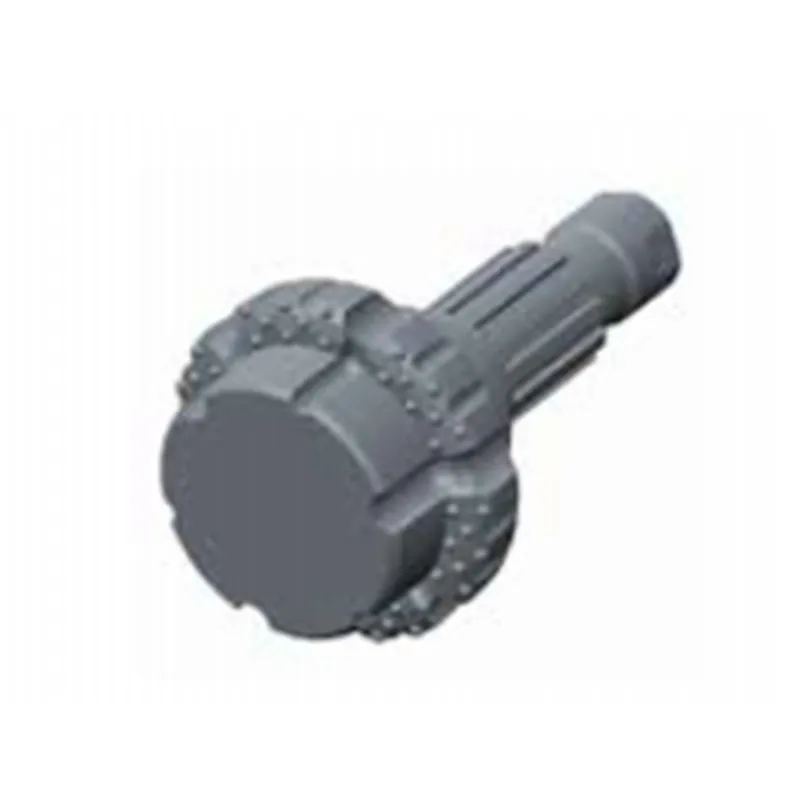
Figure 2: A detailed view of the robust cutting structure and cones on a Hole Opener Drill Bits.
Conclusion: The Future of Large-Diameter Drilling with Hole Opener Drill Bits
The role of Hole Opener Drill Bits in modern drilling operations is more critical than ever. As industries demand larger, more precise, and more efficient boreholes, the evolution of these specialized tools continues to accelerate. From advanced material science to intricate cutting structures and robust bearing systems, every aspect of Hole Opener Drill Bits is engineered for peak performance in the most challenging environments.
Investing in high-quality, application-specific Hole Opener Drill Bits, supported by comprehensive technical expertise and after-sales service, is not just a procurement decision; it's a strategic move towards optimizing drilling efficiency, reducing operational costs, and ensuring project success. As global infrastructure and resource extraction continue to expand, the demand for innovative and reliable Hole Opener Drill Bits will only grow, driving further advancements in this vital field of engineering.
References and Further Reading
-
For a detailed understanding of drilling fluid properties and their interaction with drilling tools, refer to: "Drilling Engineering: A Complete Well Planning Approach" by J.J. Azar and G. Robello Samuel. Available through major engineering book publishers.
-
Explore the latest advancements in horizontal directional drilling technologies, including reaming techniques, on the Directional Drilling Online Community Forum: https://www.hddtrenchless.com/forum/
-
For API standards on drill bits and drilling equipment, refer to the official API publications catalog: https://www.api.org/products-and-services/pub-store (Search for API Spec 7-1).
-
Insights into the global drilling tools market can be found in industry reports from leading market research firms like Grand View Research or MarketsandMarkets (subscription required for full reports, but summaries are often publicly available).
-
Low-Cost Borehole Drilling Machine for Small-Scale Projects
NewsJul.11,2025
-
Carbide Bullet Teeth for Abrasive Formations: Powering Industrial Drilling Efficiency
NewsJul.11,2025
-
Advantages of Down-the-Hole Drill Bits in Geothermal Projects
NewsJul.11,2025
-
Hole Hammer Use in Water Well Drilling
NewsJul.11,2025
-
Benefits of a Mobile Diesel Compressor in Construction
NewsJul.11,2025
-
Benefits of Diesel Portable Screw Air Compressors
NewsJul.11,2025




